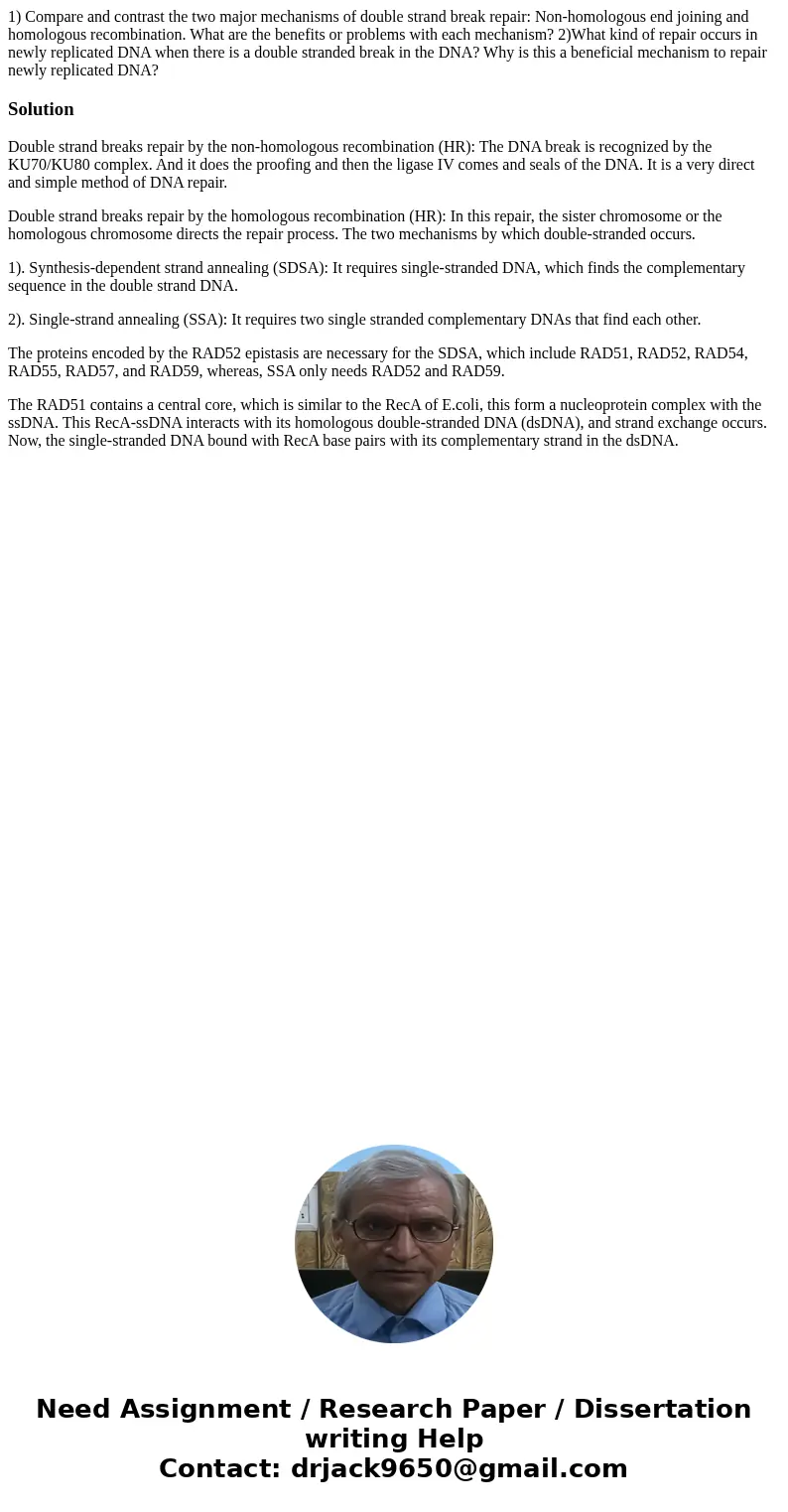1 Compare and contrast the two major mechanisms of double st
1) Compare and contrast the two major mechanisms of double strand break repair: Non-homologous end joining and homologous recombination. What are the benefits or problems with each mechanism? 2)What kind of repair occurs in newly replicated DNA when there is a double stranded break in the DNA? Why is this a beneficial mechanism to repair newly replicated DNA?
Solution
Double strand breaks repair by the non-homologous recombination (HR): The DNA break is recognized by the KU70/KU80 complex. And it does the proofing and then the ligase IV comes and seals of the DNA. It is a very direct and simple method of DNA repair.
Double strand breaks repair by the homologous recombination (HR): In this repair, the sister chromosome or the homologous chromosome directs the repair process. The two mechanisms by which double-stranded occurs.
1). Synthesis-dependent strand annealing (SDSA): It requires single-stranded DNA, which finds the complementary sequence in the double strand DNA.
2). Single-strand annealing (SSA): It requires two single stranded complementary DNAs that find each other.
The proteins encoded by the RAD52 epistasis are necessary for the SDSA, which include RAD51, RAD52, RAD54, RAD55, RAD57, and RAD59, whereas, SSA only needs RAD52 and RAD59.
The RAD51 contains a central core, which is similar to the RecA of E.coli, this form a nucleoprotein complex with the ssDNA. This RecA-ssDNA interacts with its homologous double-stranded DNA (dsDNA), and strand exchange occurs. Now, the single-stranded DNA bound with RecA base pairs with its complementary strand in the dsDNA.

 Homework Sourse
Homework Sourse